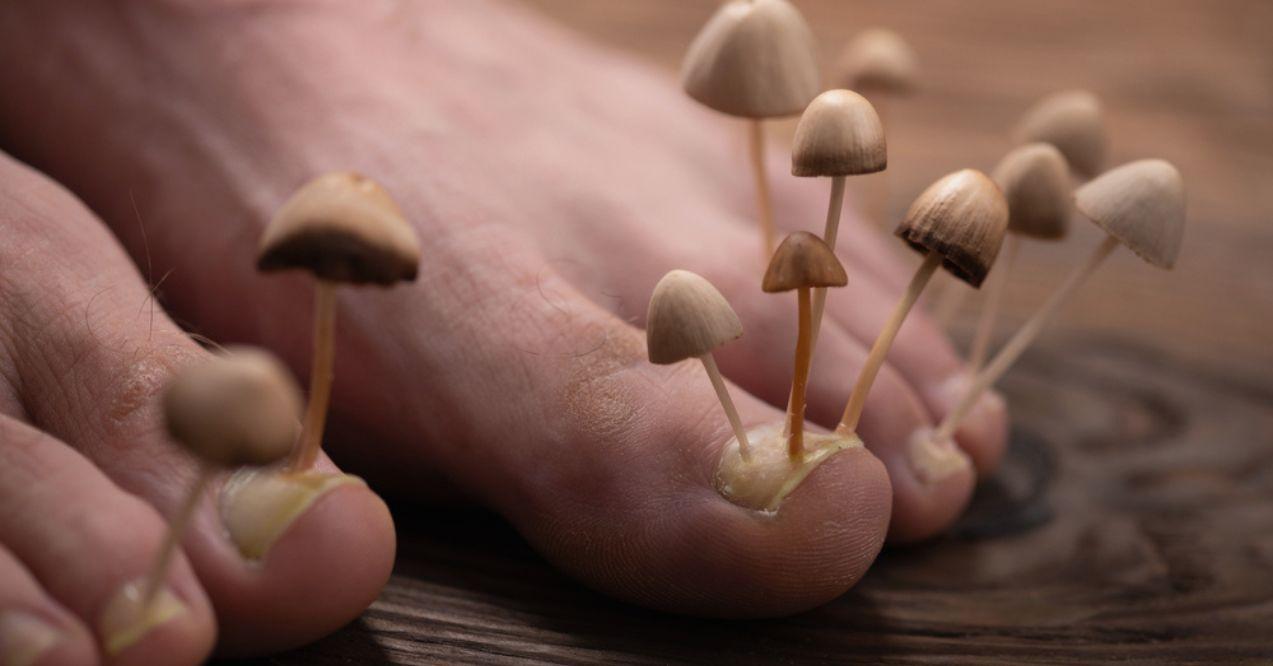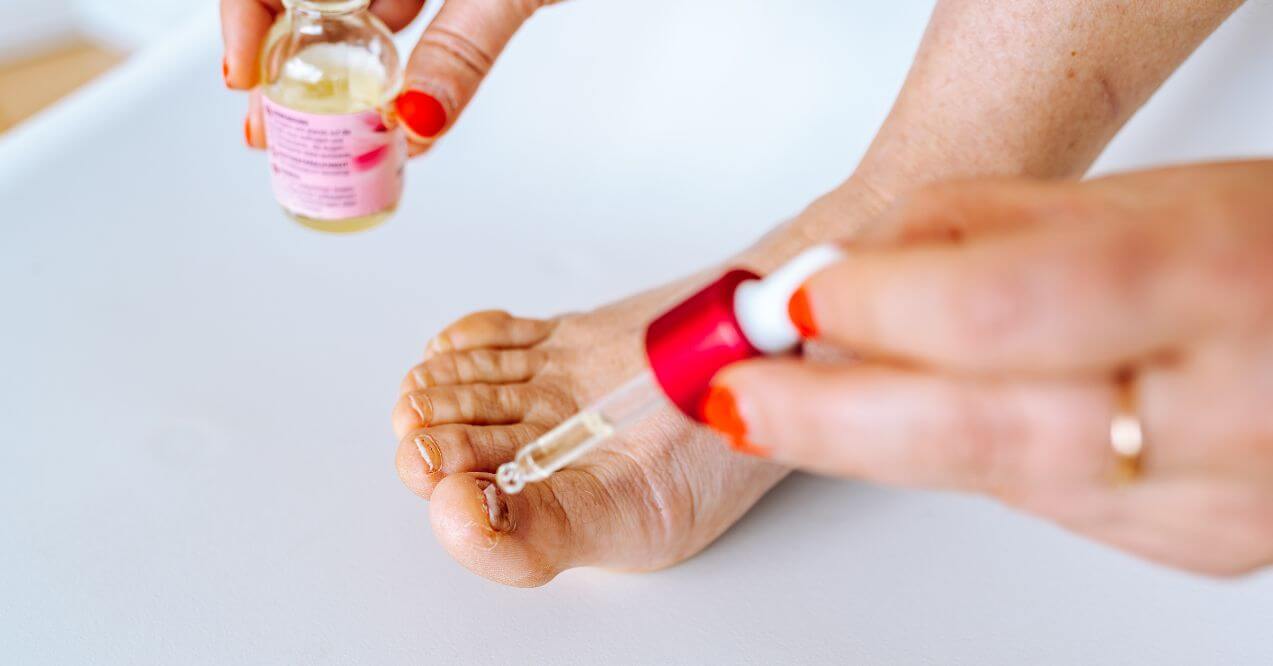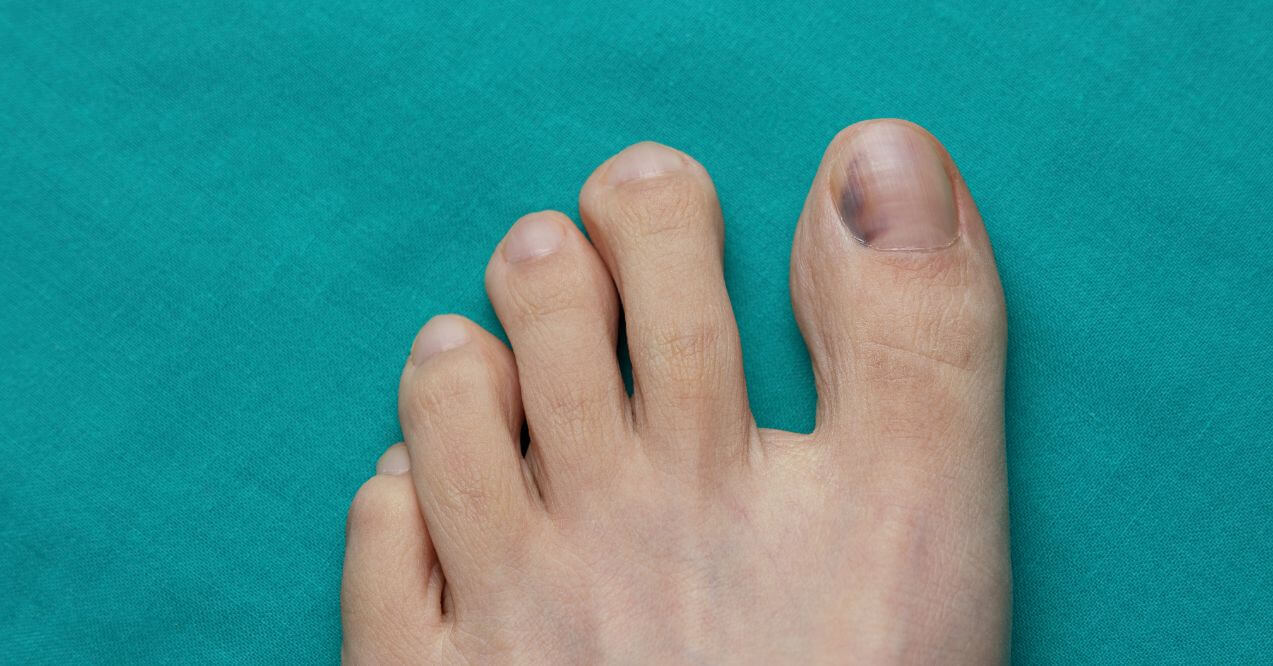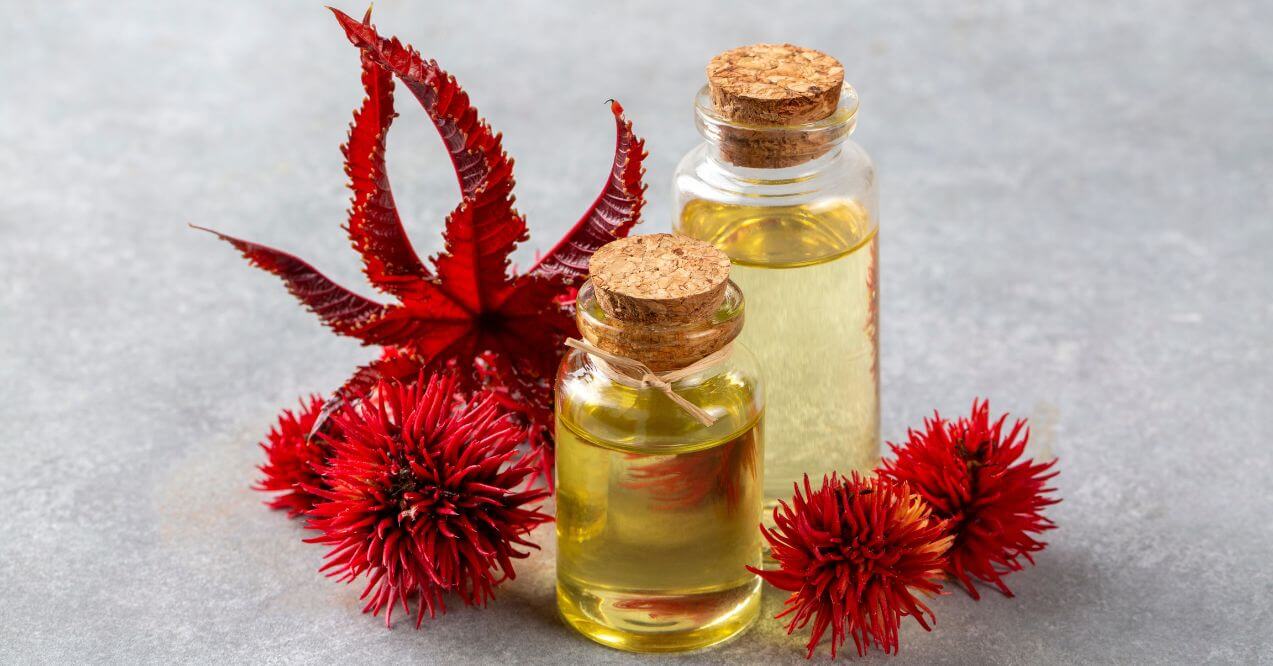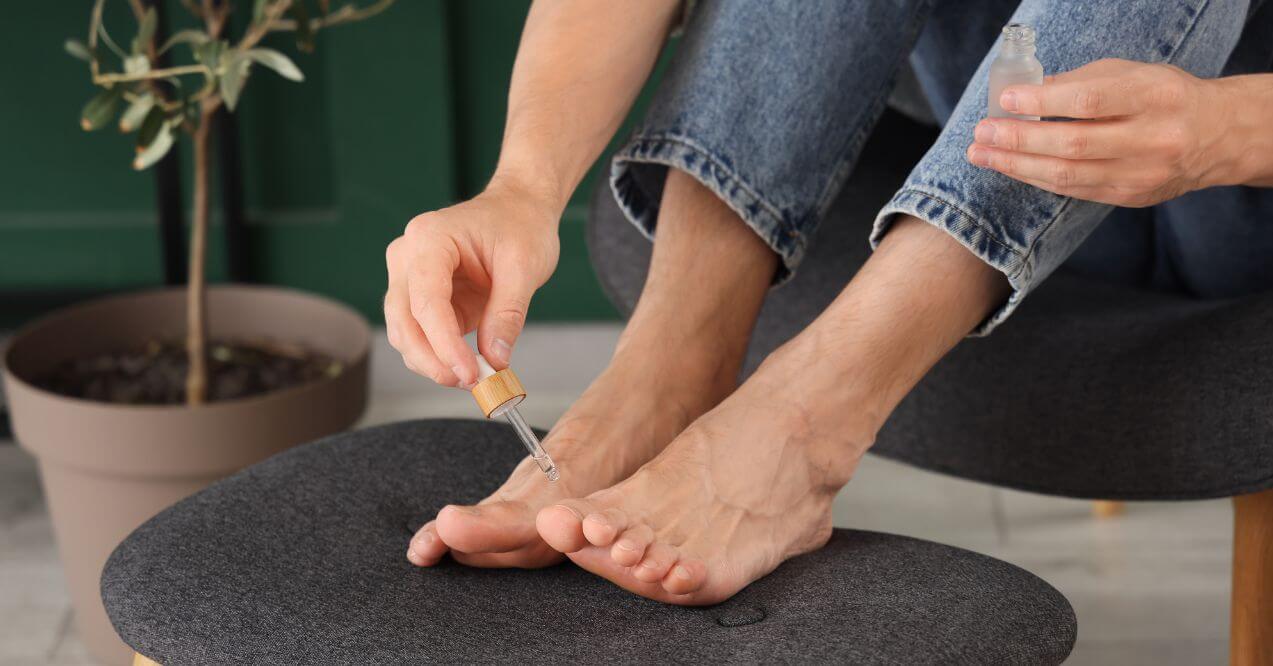How to Get Rid of Toenail Fungus: 4 Best Ways
Are you struggling with toenail fungus that won’t go away? Here’s what you need to know about getting rid of it and preventing it in the first place.
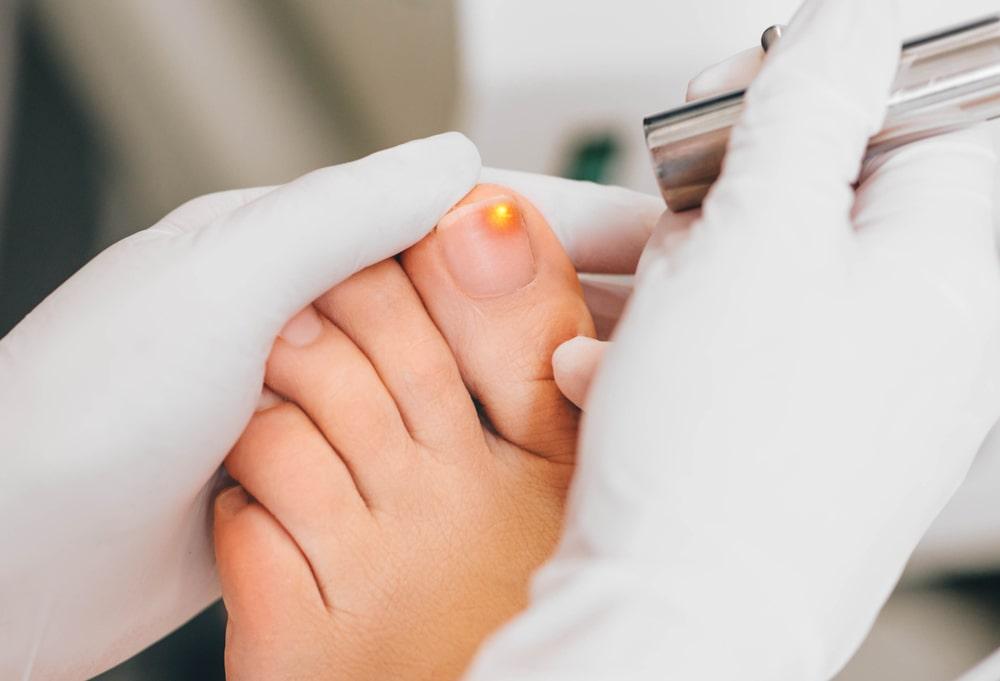

Toenail fungus is a common, but unpleasant issue. It can develop from several different incidents or places, but the question for most people is the same: how to get rid of toenail fungus, preferably fast?
The first thing that you should do is understand how this problem occurs and what you should do to alleviate it. Cases of toenail fungus range from mild to severe and can worsen over time if left untreated. There are many potential solutions, including natural and medicinal options.
Of course, if you are experiencing a severe case of toenail fungus or other symptoms, you should make an appointment with a local podiatrist, or even your primary care physician, to get the best relief. For milder cases, home treatment could be effective. Before we get into those, however, let’s take a look at what this condition is, how to identify it, and how to decide which treatment is best.
What You Need to Know About Toenail Fungus
When it comes to toenail health, one of the most common culprits of concern are various types of toenail fungus. This pesky problem starts off as a seemingly harmless white or yellow spot beneath your toenail but can quickly escalate, leading to discoloration, thickening, and crumbling of your nail. It’s a condition that can affect one or several nails, but rarely all of them.
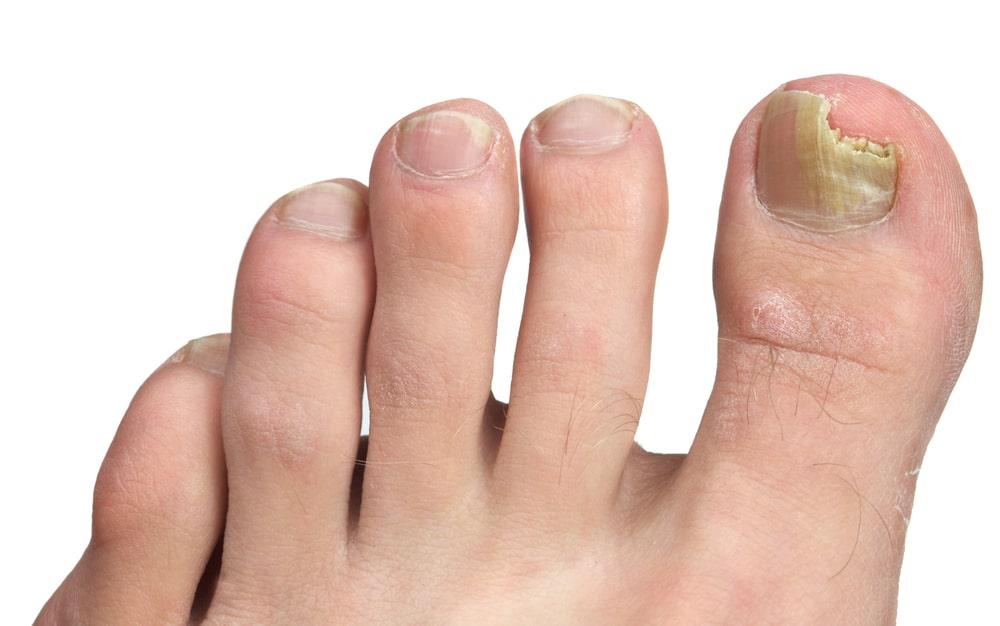
Spotting the Signs of Toenail Fungus
Recognizing early-stage of toenail fungus is key to effective treatment. Here’s what you need to keep an eye out for:
- Color Changes: Keep an eye out for any changes in color. Your nails may turn white, yellow, or even brown.
- Thickness: If your nail starts to thicken, it could be a sign of a fungal infection.
- Shape Shift: A warped or distorted nail shape is another tell-tale sign.
- Crumbling Corners: If your nail starts to crumble or split, particularly at the edges, it’s time to take action.
- Unpleasant Odor: A slightly foul smell is often a giveaway of a fungal infection.
Remember, while these symptoms often point towards toenail fungus, they can also be indicative of other conditions. So, if you notice any of these changes, it’s always a good idea to consult a healthcare professional for an accurate diagnosis.
Causes of Toenail Fungus
Toenail fungus is usually the result of an unwelcome invasion by various types of fungi, including dermatophytes, yeasts, and molds. These microscopic organisms love to set up camp in warm, moist environments and can sneak into your skin through tiny cuts or small separations between your nail and nail bed.
Here are some common scenarios and risk factors that can increase your chances of developing toenail fungus:
- Public Spaces: Going barefoot in damp communal areas like swimming pools, gyms, and shower rooms can leave you vulnerable to toenail fungus.
- Nail Injuries: A history of athlete’s foot or injuries to the nail can make you more susceptible to a fungal invasion.
- Age Factor: Older adults are more prone to toenail fungus due to reduced blood circulation and slower-growing nails.
- Health Conditions: Certain diseases, such as diabetes or psoriasis, or a weakened immune system can make you more likely to fall prey to toenail fungus.
Understanding toenail fungus and its causes is your first line of defense. If you suspect you’re dealing with this condition, don’t wait. Seek treatment promptly to stop the fungus in its tracks and prevent it from spreading or worsening.
How to Get Rid of Toenail Fungus
The best way to get rid of toenail fungus is going to vary from one person to the next. There are natural remedies, OTC treatments, prescriptions, and even physical procedures like removing the nail. The ideal solution will depend on the severity of the fungus, as well as the individual’s overall health and other concerns. For example, if you’ve already tried the natural remedies below to no avail, you may need to consider chemical medications or a trip to the doctor for further assistance.
1. Natural Remedies
Natural remedies have gained popularity among those who prefer a holistic, non-invasive approach to health. These remedies, while not FDA-approved, have been used for centuries across various cultures to treat a wide range of ailments, including toenail fungus. Their effectiveness can vary significantly due to individual differences in body chemistry and the severity of the condition.

White Vinegar
Many people have reported positive results from using these remedies. This has contributed to their continued popularity. One such remedy is white vinegar. This common household item doubles as a potent antifungal agent. It can be used alone or combined with Listerine, a mouthwash known for its antifungal properties.
To use this remedy, you need to prepare a foot soak. Mix one part vinegar with two parts warm water. Immerse your feet in this solution for about 20 minutes each day. The acidic nature of vinegar alters the pH balance of the skin. This creates an environment that is inhospitable to the fungus, helping to kill it and prevent its spread.

Tea Tree Oil
Another natural remedy is tea tree oil. Derived from the leaves of the Melaleuca alternifolia plant native to Australia, it’s renowned for its powerful antifungal and antiseptic properties. To use tea tree oil, apply it directly to the affected toenail using a cotton ball or swab. However, tea tree oil is potent and can cause skin irritation if used undiluted. Therefore, it’s important to dilute it with a carrier oil like coconut or olive oil before application.
Pau D’arco Tea
Pau D’arco Tea is also used as a foot soak in the treatment of toenail fungus. This tea is made from the bark of the Pau D’arco tree found in South America. It’s important to note that this tea should not be ingested due to potential side effects. Instead, it should be used externally.
The active compounds in Pau D’arco, namely lapachol and beta-lapachone, have antifungal properties. These can help combat toenail fungus. To use this remedy, steep the tea, let it cool, and then soak your feet in it for about 20 minutes.

While these natural remedies can be effective, they may take longer to show results compared to over-the-counter or prescription treatments. Patience and consistency are key when using natural remedies. Additionally, treating toenail fungus at home may not always be safe. Procedures such as using bleach for toenail fungus may increase the risk of fungal infestations, as it damages both the skin and nails. With such increased risks, the chances of fungus penetrating the damaged skin or cells become higher, potentially worsening existing conditions. Therefore, it’s always advisable to consult with a healthcare professional before starting any new treatment regimen. This ensures that it’s safe and suitable for your specific circumstances.
2. OTC Treatments for Toenail Fungus
When it comes to treating toenail fungus, over-the-counter (OTC) treatments offer a convenient and accessible first line of defense. These treatments, available at local pharmacies or online, provide an easy-to-use solution for those seeking to combat this common, yet bothersome condition.
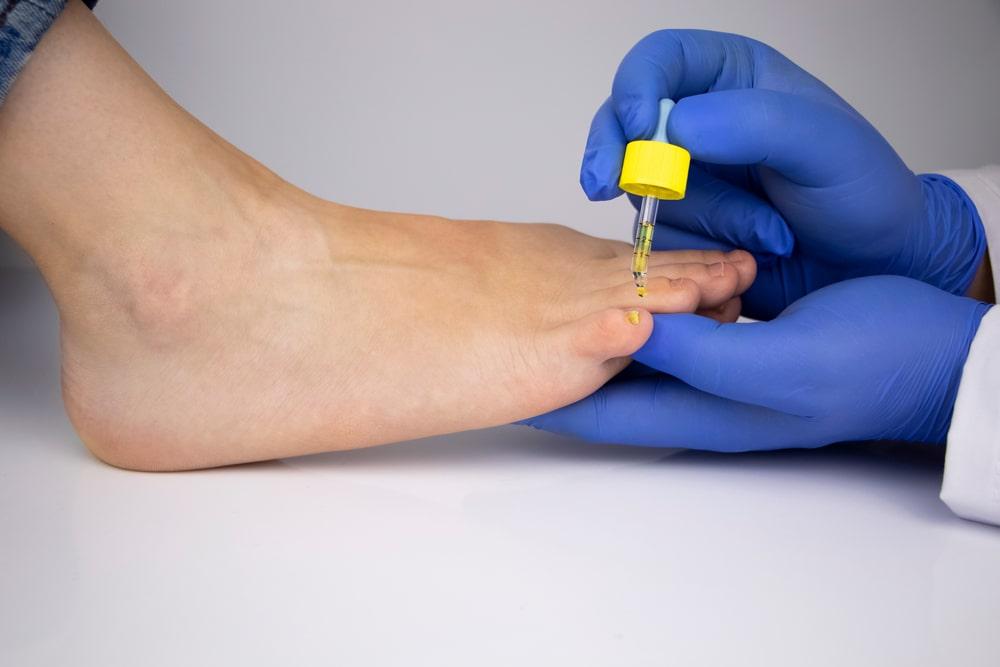
OTC treatments come in a diverse range of forms, catering to different user preferences and specific needs. These include antifungal creams, gels, and even specially formulated nail polishes, each designed with the primary aim of tackling the fungus causing the infection.
Antifungal Creams and Gels
Antifungal creams and gels work by penetrating the nail to reach the underlying fungus. They contain active ingredients, such as clotrimazole or terbinafine, renowned for their potent antifungal properties. These ingredients work by disrupting the cell membrane of the fungus, effectively halting its growth and spread.
Antifungal Nail Polishes
On the other hand, antifungal nail polishes offer a more targeted treatment option. Applied directly to the infected nail, these polishes form a protective barrier that prevents the fungus from spreading further. Some of these polishes also contain antifungal ingredients that actively work to eliminate the fungus.
When using these OTC treatments, adherence to the instructions provided on the packaging is crucial. This usually involves applying the product to the affected area once or twice daily. Regular and consistent application is key to effectively treating toenail fungus. Moreover, it’s essential to continue the treatment for the recommended duration, even if symptoms improve, to ensure complete elimination of the fungus and prevent recurrence.
While OTC treatments can be effective, they may not suffice for more severe or stubborn cases of toenail fungus. In such instances, a consultation with a healthcare professional for a stronger, prescription-based treatment may be necessary.
It’s important to remember that while OTC treatments offer a convenient solution, maintaining good foot hygiene is fundamental in preventing toenail fungus. This includes keeping your feet clean and dry, opting for breathable footwear, and avoiding barefoot walking in public areas like pools and locker rooms.
3. Prescriptions
When dealing with more severe cases of toenail fungus, prescription treatments often become the recommended course of action. These treatments, which are typically stronger than over-the-counter (OTC) options, include antifungal polishes, creams, gels, and oral medications. They are designed to provide a more potent solution to effectively combat persistent fungal infections.
Prescription treatments are usually administered under the guidance of a healthcare professional. This is due to their strength and the potential for side effects. These side effects can range from mild to severe and may include nausea, headaches, and potential allergic reactions.
Therefore, it’s crucial to have a thorough discussion with your doctor about these potential side effects before starting any prescription treatment. This allows you to make an informed decision about your health and treatment plan.
Since prescriptions come with unpleasant side effects like nausea, headaches, potential allergic reactions, and more. It may be best to try all the non-prescription options first, like Fungus Eliminator by PureHealth Research and Dr. Holly Lucille, ND.
4. Toenail Removal
In severe cases where the infection is deep within the toenail or has been present for a long time, toenail removal may be necessary. This procedure is typically performed by a doctor and can take up to 18 months for the toenail to fully regrow.
After the procedure, your doctor will provide you with care guidelines to keep your toenail bed healthy and prevent further fungal infections. This may include the application of topical creams or other treatments.
While toenail removal may sound drastic, it can be a highly effective way to get rid of stubborn toenail fungus. However, it’s typically considered a last resort after other treatments have failed.
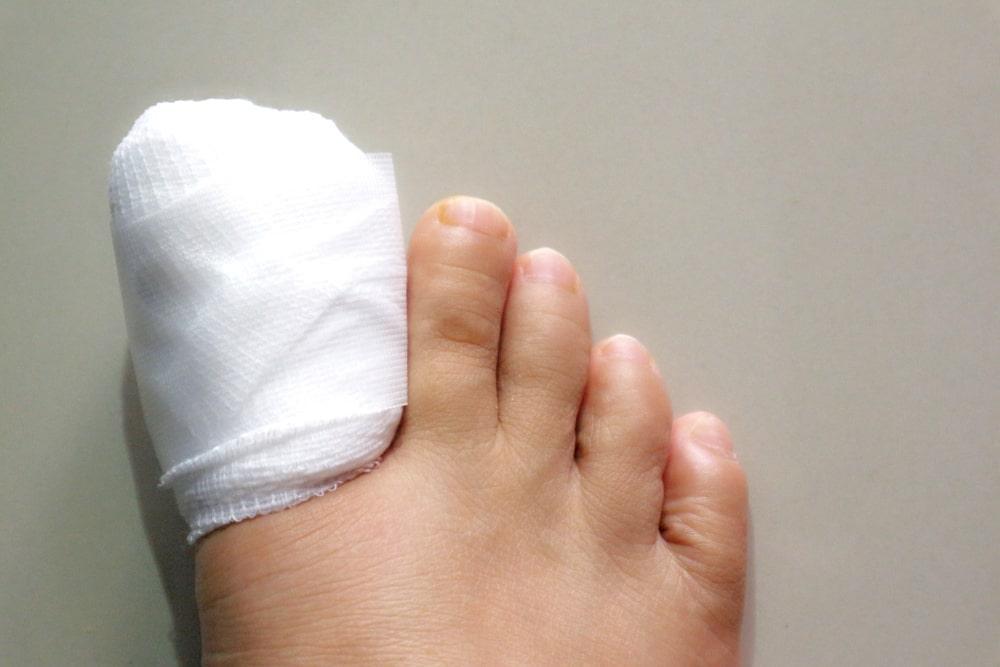
Preventing Toenail Fungus
Preventing toenail fungus is a crucial aspect of foot health. While treatments are available for those who develop this condition, prevention is always the best course of action. A combination of good hygiene practices and the use of dietary supplements can significantly reduce the risk of developing toenail fungus.
Foot Hygiene
Maintaining impeccable foot hygiene is your first and most crucial step towards preventing toenail fungus. Here are some practical tips to keep your feet in top shape:
- Stay Dry: Fungi love moist environments. Make sure your feet are thoroughly dry after showers, swims, or workouts. Pay special attention to the spaces between your toes.
- Choose Breathable Footwear: Opt for shoes made from breathable materials. They allow air circulation, keeping your feet dry and less hospitable to fungi.
- Change Socks Regularly: If your feet tend to sweat a lot, consider changing your socks during the day.
- Avoid Barefoot in Public Areas: Always wear sandals or water shoes in public pools, showers, and locker rooms to avoid direct contact with fungi.
Use of Dietary Supplements
Alongside good hygiene, dietary supplements for toenail fungus can play a vital role in prevention. These supplements help strengthen your body’s natural defenses, making it harder for fungal infections to develop and take hold.
Many of these supplements combine carefully selected natural ingredients known for their antifungal and immune-supporting properties. Ingredients such as herbs, antioxidants, and nutrients work together to provide comprehensive support for nail and overall health.
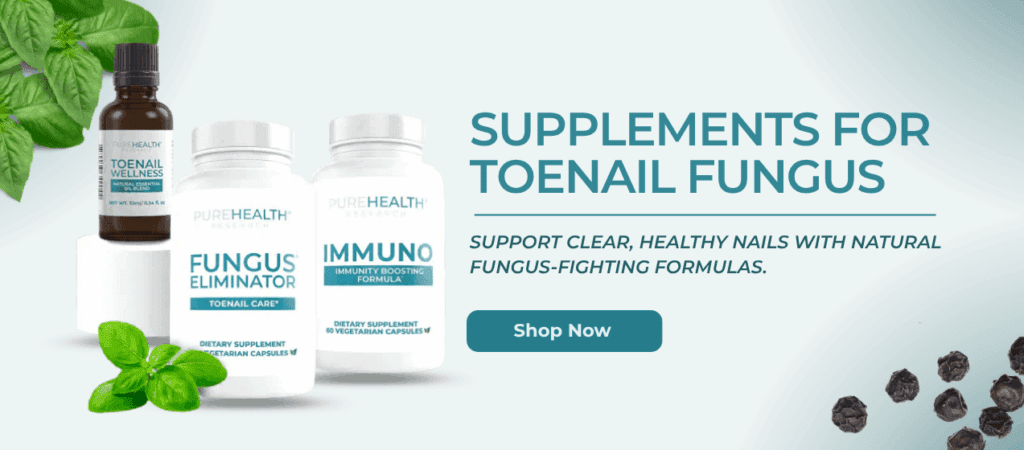
Each component is chosen for its ability to help the body resist fungal overgrowth, offering a natural solution for addressing toenail fungus without relying on harsh medications that may carry unwanted side effects. This makes supplements a safe and effective addition to a fungus prevention routine.
However, it’s important to remember that while supplements can help support your body’s defenses, they work best alongside proper hygiene and nail care habits. The combination of both provides the strongest approach to preventing and managing toenail fungus.
Final Thoughts
When it comes to toenail fungus, you have a lot of options for treatment and relief. Bear in mind that some may take a year or more. It’s best to take a proactive approach using the tips listed above so that you can avoid toenail fungus in the first place.
Now that you know more about how to treat toenail fungus, you should be able to get started and get your toenail back to its old self. Read our article on how to know if your toenail fungus is dying and learn if your treatments help!
Toenail fungus is a common issue that starts as a white or yellow spot beneath the toenail and can lead to discoloration, thickening, and crumbling of the nail. Early signs of toenail fungus include changes in nail color, thickening of the nail, a warped or distorted nail shape, crumbling corners, and an unpleasant odor.
For milder cases, home treatments can be effective. Natural remedies such as white vinegar foot soaks, tea tree oil applications, and Pau D’arco Tea foot soaks have been used traditionally. However, their effectiveness can vary, and it’s essential to consult a healthcare professional before starting any treatment.
Toenail fungus is caused by various fungi, including dermatophytes, yeasts, and molds. Risk factors include walking barefoot in damp communal areas like swimming pools, having nail injuries, being an older adult, and having certain health conditions like diabetes or a weakened immune system.
Over-the-counter treatments include antifungal creams, gels, and specially formulated nail polishes. These treatments contain active ingredients like clotrimazole or terbinafine that work to eliminate the fungus. It’s crucial to follow the instructions and continue the treatment even if symptoms improve.
If you have a severe case of toenail fungus or if over-the-counter treatments don’t work, it’s advisable to consult a healthcare professional. Prescription treatments, which are stronger than OTC options, and toenail removal are medical procedures that can be considered for persistent fungal infections.
Sign up for our Healthy Living newsletter!
Advertisement. This site offers health, wellness, fitness and nutritional information and is designed for educational purposes only. You should not rely on this information as a substitute for, nor does it replace, professional medical advice, diagnosis, or treatment. If you have any concerns or questions about your health, you should always consult with a physician or other health-care professional. Do not disregard, avoid or delay obtaining medical or health related advice from your health-care professional because of something you may have read on this site. The use of any information provided on this site is solely at your own risk.




